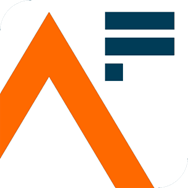Sex harmonisation guidance
This page provides information on work that is currently taking place across the Government Statistical Service (GSS) to harmonise measures of sex in data collection across government.
For more information or advice on this topic, please contact Harmonisation@statistics.gov.uk.
Policy details
| Metadata item | Details |
|---|---|
| Publication date: | 4 September 2019 |
| Owner: | GSS Harmonisation Team |
| Who this is for: | Users and producers of statistics |
| Type: | Harmonisation standards and guidance |
| Contact: | Harmonisation@statistics.gov.uk |
What we mean by harmonisation
Harmonisation is the process of making statistics and data more comparable, consistent and coherent by using consistent definitions and questions in data collection. The GSS Harmonisation Team works across the UK to promote and facilitate harmonisation. We provide guidance encouraging the use of standard data collection questions across government departments and the wider public sector, where these are appropriate to meet user needs.
Measuring sex in the UK censuses
The census in England and Wales is run by the Office for National Statistics (ONS). The National Records of Scotland (NRS) run the census in Scotland and the Northern Ireland Statistics and Research Agency (NISRA) run the census in Northern Ireland.
ONS, NRS, and NISRA worked closely together throughout development of the 2021 and 2022 Census questionnaires to share research and work towards harmonisation where possible. You can find out more about the work to develop the census questionnaires and improve harmonisation on the ONS website.
The sex data collected in the UK censuses is important because other data analysis is often adjusted to match the proportions of the sexes found in the census. This is important data for understanding population dynamics and projecting future change.
The question on sex in the three censuses is harmonised across the UK. The accompanying guidance differed between nations on the most recent UK censuses.
You can access the sex question guidance used in Census 2021 in England and Wales via the ONS website: Census 2021: Final guidance for the question “What is your sex?”. You can access the sex question guidance used in Scotland’s Census 2022 via Scotland’s Census website: Scotland’s Census 2022: sex question guidance.
The Office for Statistics Regulation has provided guidance to support official statistics producers in applying the principles of the Code of Practice for Statistics when making decisions about the collection and reporting of statistics and data about sex and gender identity.
About the census question on sex
The question “What is your sex?” was asked in:
- the 2011 Census in England, Wales, and Northern Ireland
- Census 2021 in England, Wales, and Northern Ireland
- Scotland’s Census 2022
The response options for each of the censuses where this question was asked were “Female” and “Male”. This question on sex has been asked on the censuses for many decades and the consistency of this is unchanged, which is vital for identifying trends over time.
ONS, NRS, and NISRA engaged widely with users and stakeholders on the 2021 and 2022 censuses and thoroughly tested their proposals to ensure high quality and consistent data.
Further information
Inclusive Data Taskforce recommendations
In October 2020, the National Statistician established the Inclusive Data Taskforce. It was designed to improve the UK’s inclusive data holdings in a broad range of areas. This includes the nine protected characteristics of the Equality Act.
The Taskforce published their recommendations in September 2021. You can read the Taskforce recommendations on the UK Statistics Authority (UKSA) website. Some of the recommendations specifically refer to harmonisation. In response to the recommendations, the ONS oversaw the publication of an Implementation Plan in January 2022.
You can access the implementation plan for the Taskforce recommendations on the UKSA website. The implementation plan gives information about the current and planned initiatives across the UK statistical system. It refers to a GSS Harmonisation Workplan, which was first published in February 2022, and replaced by the new workplan in August 2024 and recently updated with our plans for sex and gender identity.
GSS Harmonisation Workplan
The GSS Harmonisation team are undertaking priority work to develop best practice harmonised standards for the topic of sex and gender identity data. More information about this is provided in our updated GSS Harmonisation workplan.
Contact us
If you would like to be involved with this work, please contact us at outreach.engagement.community@ons.gov.uk
Updates
11 December 2024 – Updates have been made following the publication of an updated GSS Harmonisation workplan for the topics of sex and gender identity.
15 December 2022 – Updates have been made to reflect the completion of the UK Censuses and our publication of the review of the gender identity standard.
16 July 2020 – Link to the gender identity data harmonised standard included.
26 June 2020 – Minor updates have been made to reflect the progress of work in this area.
Related
Gender identity data harmonised guidance
